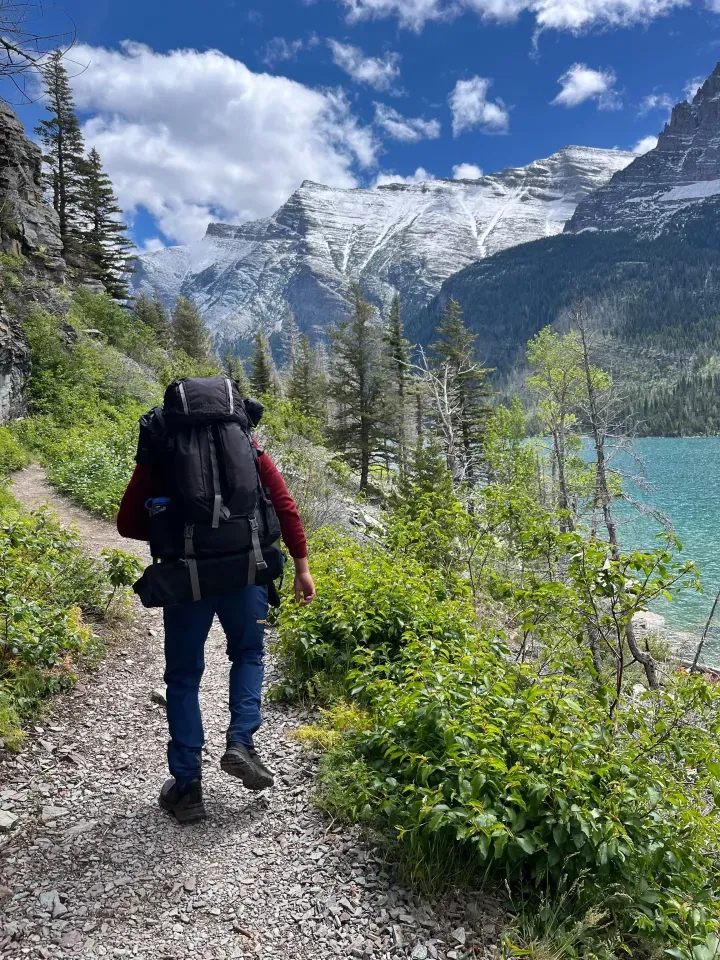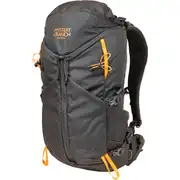If you are in the beginning stages of trying to get into the outdoors and staying the day outside, this is the list I would recommend for your day outside. This list starts with the backpack to the little knickknacks that you wouldn't think you would need. Hope this helps and enjoy the outdoors.
Location: Virginia Falls Trail, Glacier National Park, MT | Adventure: Hiking | Season: Early June
May contain sponsored links*Optics
Hiking, it isn't necessarily a must have however if you are wanting to see nature/ animals from a distance safely. I would recommend some form of binoculars.
Binoculars
Backpacks & Gear
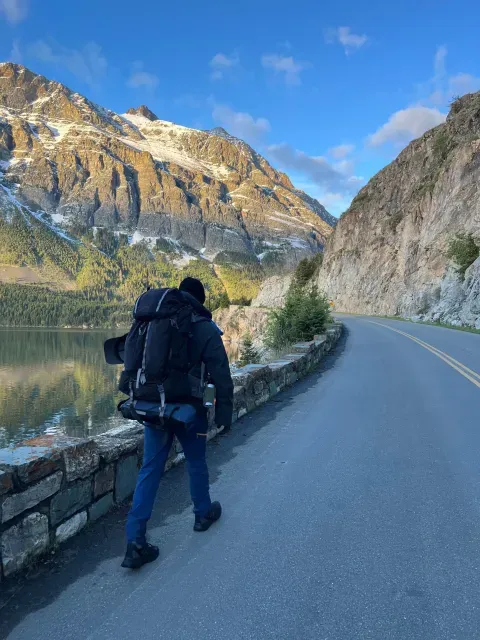
Hiking, especially at a National Park, I like to spend as much time in nature without having to turn back to the car or campsite. I prefer to have all the things I need on the me and be ready. Others may like to be light weight hikers and that is absolutely a great route to go, but for me having a bigger pack like the Mystery Ranch 65 helps to carry more gear.
Backpacks
Mystery Ranch 65, Mystery Ranch Coulee 20. 20 L or 65 L is definitely a big range, more more perspective, my wife is carrying the 20 L with her rain coat, hydration and binoculars. I'm not a light weight hiker/ camper and can carry more weight. However if you prefer to be a minimalist , I would recommend a smaller pack like the coulee.
Knives
Hydration
Hydration is key to sustain your movement throughout the day (even if it is just recreationally). Carrying a camelback for myself that integrates into the Mystery Ranch pack is nice to not fiddle with your pack if needing a break for water. My back up and for my wife we used Nalgene bottles.
Flashlights & Headlamps
I prefer a rechargeable light. Headlamp has red light features if you were concerned about not blinding folks at night.
GPS & Satellite Messengers
A gps watch isn't necessarily a must have but I would highly recommend at least a Garmin InReach. It does possess a bread crumb trail map on its display and can sync to the Garmin Explore app which can be used without cell coverage.
Safety/ First Aid
Safety Items
The emergency blanket and fire starter is self explanatory, however you may forget bear spray. Most stores offer bear spray around $40 dollars.
Fire Starter
Bear Spray
Medical/ Blister Kits
I went to the local store and created my own medkit/ blister kit.
Medical Kit
The quick clot is in case you do experience some form of trauma and since you are in a remote location where rescue could be 30 mins to hours away, stopping a bleed will be priority. With quick clot, some gauze to pack your wound and wrap up so you can be stabilized. The emergency blanket is to help if there is blood loss or if you were in an emergency situation and need to stay warm.
Blister Kit
For blister kit, mole skin will act as a protective layer on your foot to stop friction. Once it's too late, blister Band-Aids can help and and be placed on a blister so you can finish your hike.
Other
Camping Equipment
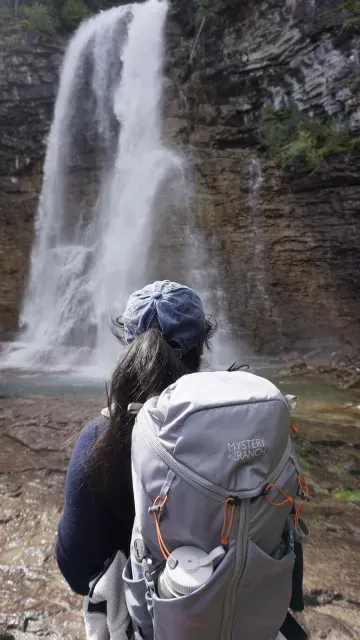
I day hike, I did not have any camping equipment.
Food & Nutrition
There isn't a 7/11 at the top of Virginia Falls, so I recommend bringing protein bars and sandwiches. Be mindful that it is bear country.
Supplement
Electrolytes as it gets hotter is something to consider. Wearing layers and a pack, you will sweat. Replenishing your sodium levels.
Snacks & Bars
These are the bars that I like, however this is up to you.
Other
Good ole Ziploc bag with ham sandwiches in them
Clothing
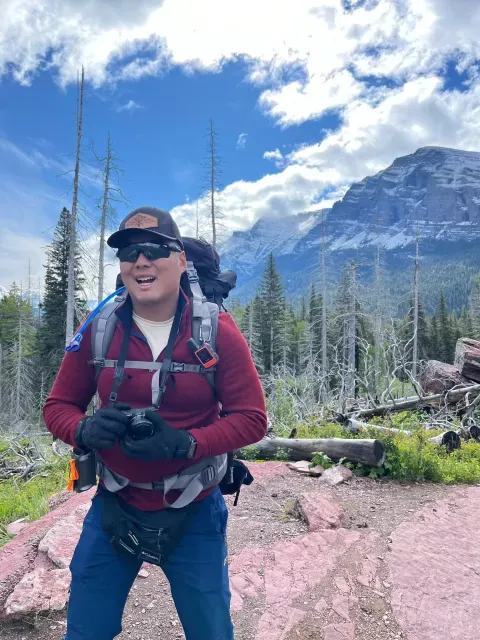
Before going out, please look at the weather forecast. There is nothing worse than being outside poorly equipped and having to gut it out. You're there to enjoy the outdoors. Now, the principles of layering is very effective and falls under clothing. Basically, most gear will be some form of polyester or merino wool that will wick moisture. Moisture in the outdoors is not a good combo. It will sap the heat from you.
Baselayers
Midlayers/ Outerwear
Outerwear/ Jackets
Pants
Footwear
I opted for a trail running shoe that had the traction for more terrain however I didn't need the ankle support. I do have Salomon's that I could wear however they have gortex and are more of a winter/ weather boot. The merrells are much lighter and were no issue for my wife.
Gloves
Socks
I would recommend a wool sock that can wick moisture. Injinis are just a luxury, however if you experience blistering a lot, the toe socks will act as a sock liner and help prevent blisters.
Sunglasses
Highly recommend sunglasses. I just use Oakley's since those fit my face better and I can do a range of activities from running to hiking without them falling off.
Photography
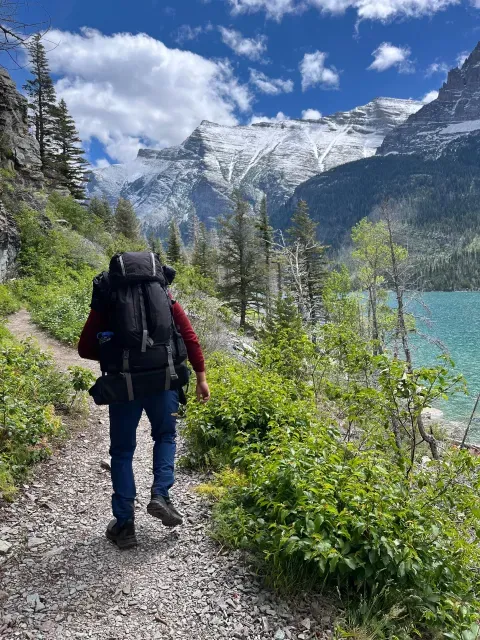
Not necessarily a must have, modern cell phones have advanced a bit. With that being said, they often fail to capture the beautify of the landscape. No need to get the top of the line camera but this is a nice entry point since it is a relatively older camera.

